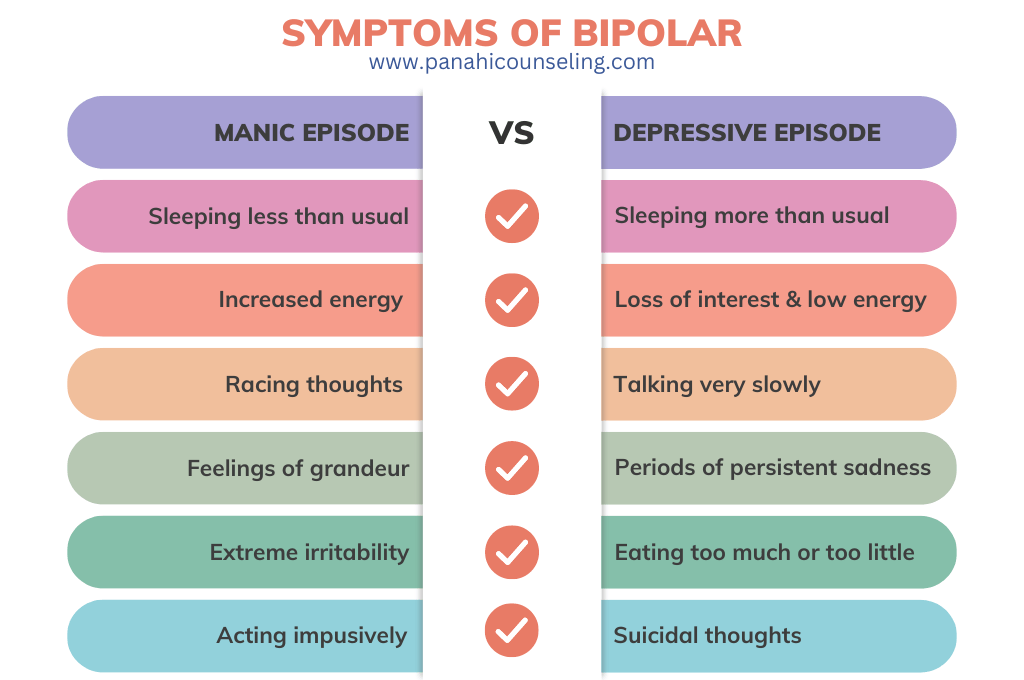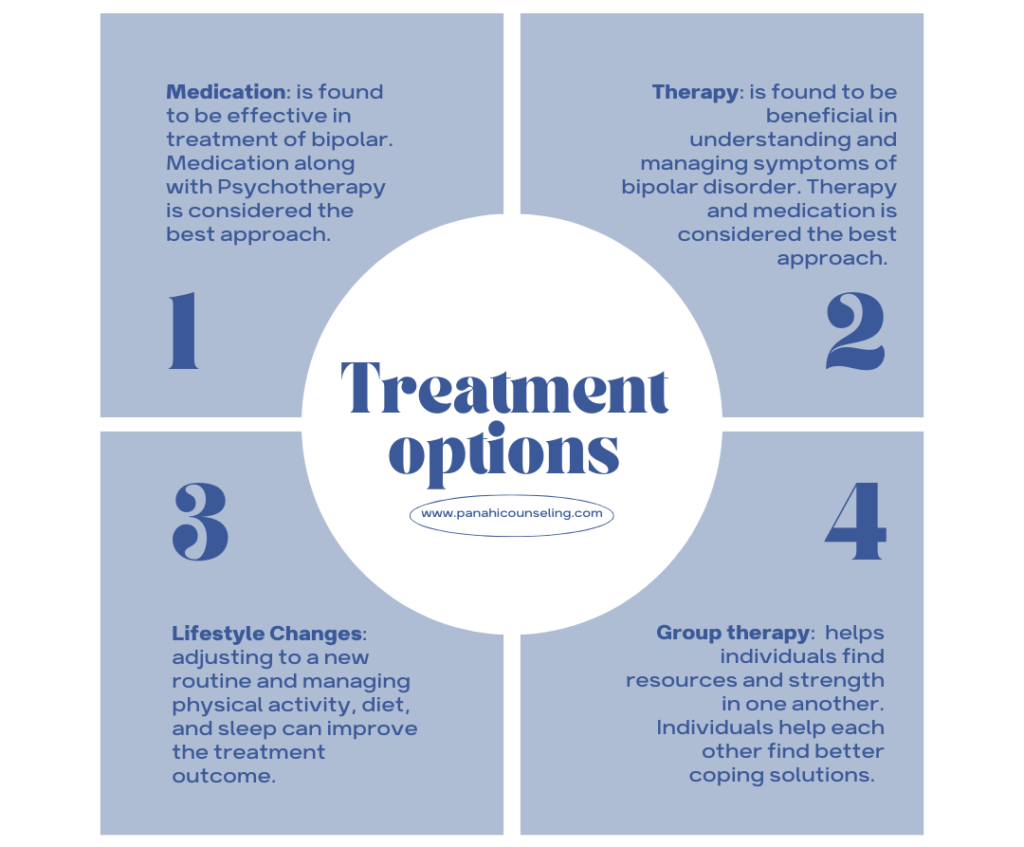Have you ever experienced a time when you felt extremely happy and excited, like you were on top of the world? Or maybe there were days when you felt very sad, like nothing could make you happy again. Well, imagine if these feelings suddenly changed back and forth, leaving you feeling confused and unsure of what’s going on. That’s what it’s like for some people living with bipolar disorder.
In this blog post, we’ll explore the basics of bipolar disorder and learn how it can affect a person’s emotions and daily life. Our goal is to help you understand this condition better so that we can be kind and supportive to those who experience it. Or if you are someone suffering from bipolar disorder, we hope that this blog post provides you with some useful information as you seek treatment and support. Let’s begin!
What is bipolar disorder?
Bipolar disorder is a mental health condition that affects how people feel and act. It’s like having emotional ups and downs, but way more intense and unpredictable. Sometimes, a person with bipolar disorder might feel super happy and excited, called a “manic” episode. But then, they might feel very sad and low, known as a “depressive” episode.
Bipolar Disorder type 1, in particular, is characterized by extreme mood swings that can disrupt a person’s life and relationships. These mood shifts are more severe than those experienced in bipolar disorder type 2 or other forms of depression.
Let’s talk about bipolar 2 briefly
Bipolar Disorder type 2, shares similarities with bipolar disorder type 1 but presents with distinct differences. While both types involve mood swings between highs (manic episodes) and lows (depressive episodes), bipolar disorder type 2 is marked by milder manic episodes, known as hypomania. During hypomania, individuals may experience heightened energy, creativity, and productivity, but without the extreme levels of recklessness or impairment seen in full-blown mania.
In contrast to bipolar disorder type 1, where manic episodes can escalate into severe disruptions in daily life, those with bipolar disorder type 2 tend to experience less severe and shorter-lasting manic phases. However, depressive episodes in bipolar disorder type 2 can be just as profound and impactful on a person’s well-being as those experienced in bipolar disorder type 1 or major depression.
Understanding Bipolar Disorder Type 1 Symptoms
Let’s delve deeper into the symptoms of bipolar disorder type 1, which can be divided into manic and depressive episodes.
Manic Episodes:
- Elevated Mood: During a manic episode, a person might feel overly happy, on top of the world, or euphoric. They might describe this feeling as if they have unlimited energy.
- Rapid Thoughts: The mind races with thoughts, making it challenging to focus or concentrate on one thing at a time.
- Decreased Need for Sleep: Despite having boundless energy, individuals experiencing mania may find themselves sleeping less without feeling tired.
- Increased Talkativeness: They may talk rapidly, sometimes to the point where others find it difficult to keep up with the conversation.
- Grandiose Thoughts: People in a manic state might believe they possess special abilities, have extraordinary ideas, or are destined for greatness.
- Impulsive Behavior: Manic individuals may engage in risky activities, such as reckless driving, excessive spending, or impulsive decisions with potential negative consequences.
- Increased Agitation: A person in a manic episode might become easily irritated, aggressive, or agitated.
Depressive Episodes:
- Persistent Sadness: During a depressive episode, a person feels deeply sad and might struggle to find joy or interest in anything.
- Fatigue and Loss of Energy: Daily activities can become overwhelming, leading to extreme tiredness and a lack of motivation.
- Sleep Problems: Sleep patterns may be disrupted, leading to either insomnia or oversleeping.
- Appetite Changes: Individuals may experience changes in appetite, leading to weight gain or loss.
- Difficulty Concentrating: Depressive episodes can impair cognitive function, making it challenging to concentrate or make decisions.
- Feelings of Worthlessness or Guilt: Those in a depressive state might experience unwarranted guilt or feel that they are a burden to others.
- Suicidal Thoughts: In severe cases, depression can lead to thoughts of self-harm or suicide, necessitating immediate professional help.

Possible Causes of Bipolar Disorder Type 1
The exact cause of bipolar disorder is not fully understood, but it is believed to be a combination of genetic, environmental, and neurobiological factors. Having a family history of the disorder increases the likelihood of developing it. Stressful life events or traumatic experiences may trigger the onset of the condition in those already predisposed to it (a)(b)(c).
Bipolar Disorder Type 1 Treatment Options
Bipolar Disorder type 1 requires a comprehensive treatment approach involving medical professionals, therapists, and support networks. Here are some common treatment options:
Medication: Mood stabilizers, such as lithium and valproate, are often prescribed to help manage mood swings and prevent further manic and depressive episodes. Antipsychotic medications can help manage manic symptoms, and antidepressants might be used to address depressive episodes.
Psychotherapy & Group Therapy: Different types of therapy, including cognitive-behavioral therapy (CBT), dialectical behavior therapy (DBT), and family-focused therapy, can be beneficial in understanding and managing the condition’s impact on thoughts and behaviors. In group therapy, participants learn coping skills from each other and help one another accomplish their individual goals despite the ups and downs of bipolar symptoms.
Lifestyle Changes: Adopting a healthy lifestyle, including regular exercise, balanced nutrition, and sufficient sleep, can complement other treatment approaches and promote overall well-being.

Understanding the symptoms of bipolar disorder type 1 enables us to recognize the challenges faced by those affected. With empathy, support, and knowledge, we can foster an environment where individuals living with bipolar disorder feel accepted, understood, and supported.
Remember, if you or someone you know is struggling with bipolar disorder, seeking help from mental health professionals can make a significant difference. Together, let’s break the stigma surrounding mental health and create a world where compassion and understanding prevail.
Share Post:
Start your therapy journey today.
Schedule a 15-Minute Free Consultation With Our Intake Coordinator.




